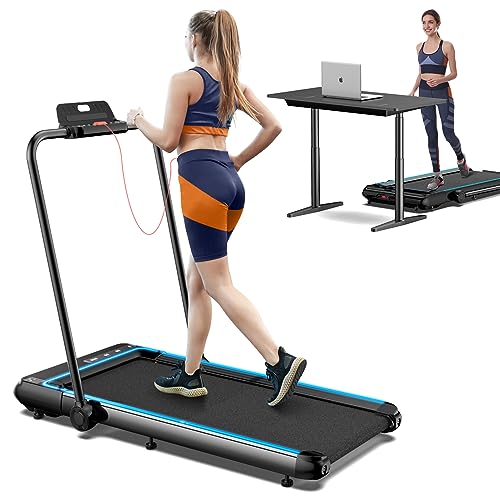Company Overview
-
Founded Date September 26, 1911
-
Posted Jobs 0
-
Categories Hoofstock
Company Description
10 Steps To Begin Your Own Treadmills Business
Understanding Treadmills: Types, Benefits, and Considerations
Treadmills have actually ended up being an integral part of fitness culture, offering a practical service for people looking for to improve their cardiovascular fitness without the need for outdoor spaces or weather factors to consider. With a variety of functions and models available, prospective buyers must be well-informed to make the best choice. This short article aims to provide a thorough overview of treadmills, including the different types, benefits, and factors to consider when acquiring one.

The Different Types of Treadmills
1. Handbook Treadmills
Manual treadmills are powered by the user instead of an electric motor. They require no electricity and typically include a simple style with less moving parts.

Benefits of Manual Treadmills:
- Cost-effective
- Portable and light-weight
- No dependence on electrical power
Downsides:
- Limited features
- Normally lack slope choices
2. Motorized Treadmills
Motorized treadmills are the most typical type, powered by an electric motor. They normally offer numerous functions such as programmable workout regimens, adjustable inclines, and greater weight capabilities.
Benefits of Motorized Treadmills treadmills:
- Smooth operation and consistent traction
- Flexible with innovative features for different exercises
- Alternatives for incline and decline settings
Disadvantages:
- Higher expense compared to manual treadmills
- Need electricity and might increase electric bills
3. Folding Treadmills
Folding treadmills are designed for simple storage, making them ideal for those with limited area.
Benefits of Folding Treadmills:
- Space-saving design
- Easy to transfer and keep
- Suitable for home usage where space is at a premium
Disadvantages:
- Typically may have a smaller running surface area
- Weight limitation may be lower than non-folding models
4. Business Treadmills
These treadmills are constructed for sturdiness and performance, typically discovered in fitness centers and gym. They are created for high usage rates and featured advanced features.
Advantages of Commercial Treadmills:
- Extremely durable and often supported by warranties
- Full range of functions, consisting of innovative training programs
- Appropriate for sturdy exercises
Drawbacks:
- Higher price point
- May be too large or heavy for home use
| Kind of Treadmill | Power Source | Common Features | Ideal For |
|---|---|---|---|
| Manual Treadmill | None | Basic workout metrics | Minimalist users |
| Motorized Treadmill | Electric | Programmable workouts, slope alternatives | General physical fitness lovers |
| Folding Treadmill | Electric | Space-saving style | Home users with restricted area |
| Business Treadmill | Electric | Advanced training programs | Gym centers |
Benefits of Using a Treadmill
Treadmills offer various benefits for people wanting to enhance their physical fitness levels or keep an athletic routine.
1. Convenience
Owning a treadmill allows users to exercise at their own schedule, eliminating dependence on weather. It provides flexibility, as exercises can occur day or night.
2. Adjustable Workouts
Lots of modern treadmills feature adjustable programs to accommodate novices and skilled athletes. Users can change speed, incline, and workout duration to make the most of the efficiency of their sessions.
3. Tracking Progress
Most treadmills come geared up with digital screens that tape-record essential data such as distance, speed, calories burned, and heart rate. Monitoring this information helps users track their fitness progress with time.
4. Minimized Impact
Treadmills typically supply a cushioned surface that can lower joint effect compared to running on difficult outside surfaces, making them a suitable option for individuals with joint concerns or those recuperating from injuries.
5. Variety of Workouts
Users can take part in various workouts on a treadmill, from walking and running to interval training and speed work. Some machines even provide built-in courses that mimic outside terrains.
Considerations When Buying a Treadmill
When acquiring a treadmill, people should think about numerous elements to guarantee they make an informed decision.
1. Space Requirements
- Measure Available Space: Before picking a model, step where the treadmill will be positioned to guarantee it fits conveniently.
- Think About Folding Options: If area is an issue, think about buying a folding treadmill for hassle-free storage.
2. User Weight and Height
- Inspect the weight capability of the treadmill to accommodate its designated users.
- Make sure that the belt length is ideal for users’ strides, especially for taller individuals.
3. Functions and Technology
- Assess whether advanced functions like heart rate monitors, Bluetooth connectivity, and integrated training programs are essential for the desired user.
- Investigate easy to use interfaces and product reviews on screen quality.
4. Service Warranty and Customer Support
- Evaluation warranty alternatives to comprehend what is covered and for the length of time. Some designs might provide prolonged guarantees or assurances for parts.
- Evaluate the brand’s credibility for customer assistance in case of breakdowns or concerns.
5. Price Range
- Consider your budget plan however keep in mind that more affordable models may lack features, resilience, or guarantee assistance.
- Check out funding alternatives if purchasing a higher-end model.
Frequently asked questions About Treadmills
1. What is the average lifespan of a treadmill?
Normally, a premium treadmill can last in between 7 to 12 years, depending on usage, maintenance, and develop quality.
2. What is the best treadmill brand name?
Popular brand names consist of NordicTrack, Sole Fitness, Precor, and LifeSpan, each understood for their quality and client satisfaction.
3. Can I use a treadmill for walking?
Yes, treadmills are ideal for walking, running, or running, making them versatile for users of all fitness levels.
4. How typically should I service my treadmill?
Routine upkeep is typically advised every six months to guarantee optimal performance and longevity.
5. Is it alright to work on a treadmill every day?
While working on a treadmill daily is appropriate for some, it’s smart to include rest days or alternate workouts to avoid potential overuse injuries.
In conclusion, treadmills stay a popular choice for physical fitness enthusiasts searching for versatility and customizability in their workout routines. By comprehending the various types available, their advantages, and essential elements to think about throughout purchase, users can make an educated decision that aligns with their fitness objectives and way of lives.


